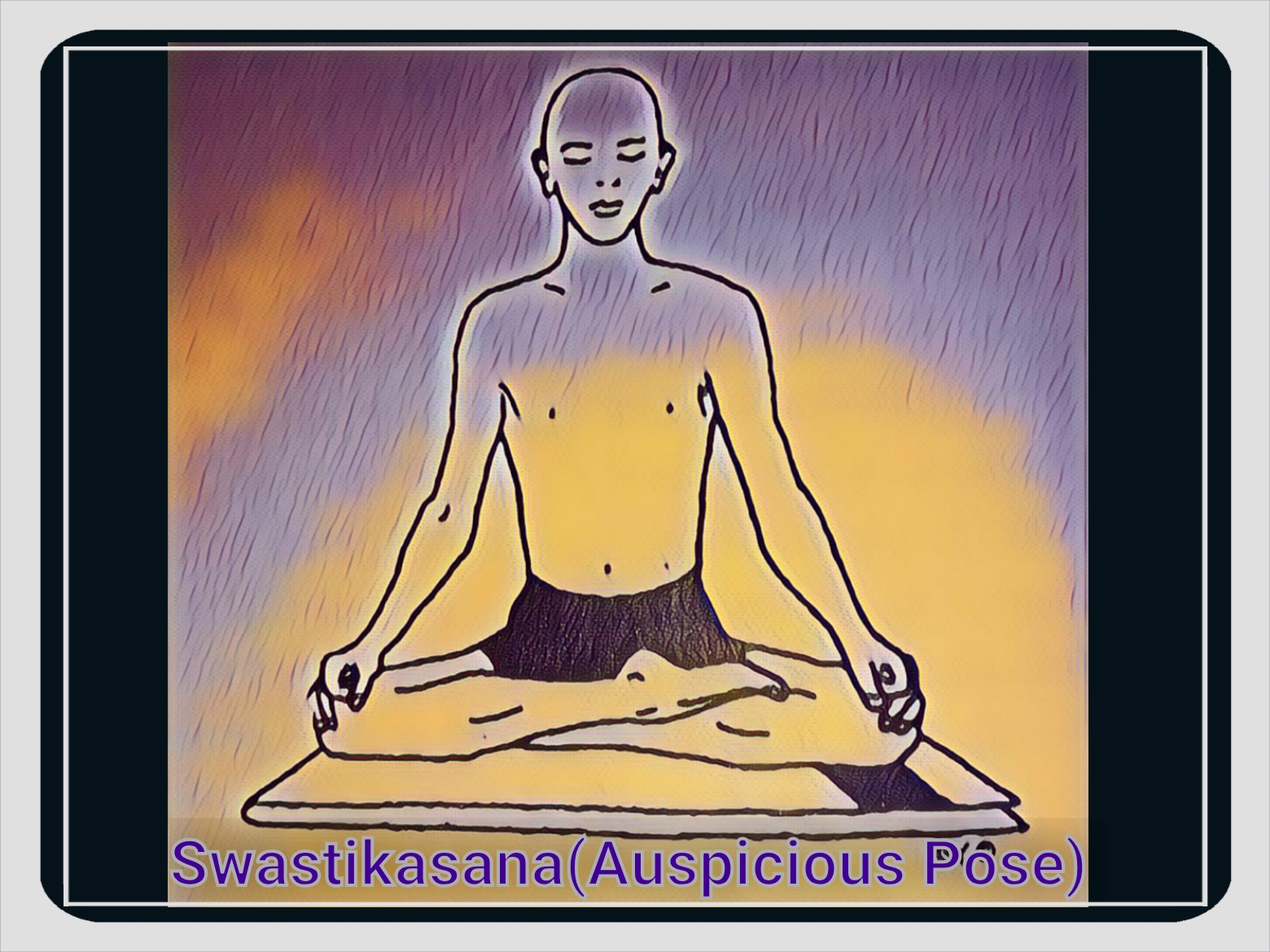Swastikasana (Auspicious Pose)
In this article we will tell you what is Swastikasana, the benefits of doing Swastikasana, the right way to do it, method and precautions.
Place both the soles between the thighs and knees and adopt a triangular posture and sit in equanimity, this is called Swastikasana.

Swastikasana is a yoga posture in which one has to sit with the legs crossed and the feet under the thighs. The hands rest on the knees and the palms face downwards. It is a meditation posture that promotes peace and concentration. The word “Swastikasana” is derived from the Sanskrit words “swastika”, meaning auspicious, and “asana”, meaning posture. Practicing Swastikasana enhances digestion, improves posture and aids meditation. Like any yoga pose, it is essential to practice with proper alignment and breathing.
Swastikasana is one of the main asanas of meditation. Different yoga pioneers and interpreters have considered different exercises as the best. Maharishi Patanjali has described some special exercises of meditation and so has Maharishi Gheranda. Generally, four main asanas of meditation are considered – Padmasana, Siddhasana, Swastikasana and Sukhasana. All the interpreters of Yoga have given their full approval to these four asanas. Apart from these, there are other easy methods of meditation, but these four are considered to be the main ones.
How to Do Swastikasana?
To practice Swastikasana, the legs are spread in front. Bend the left knee and place the sole of the left foot near the inner part of the right thigh in such a way that the heel does not touch the seam. Bend the left knee and place the right foot on top of the left foot. Like sitting in Sukhasana. Now do not just sit in Sukhasana, just as in the practice of Siddhasana, the toes of the feet are taken out from between the thigh and the calf, in the same way, while sitting in Sukhasana, bend the left leg and take the toes out from between the right thigh and calf. And the toe of the right foot has to be taken out between the left thigh and calf. The toes of both feet remain pressed between the thigh and calf.
The heels should not touch the pelvic region. Knees should remain in contact with the ground. Keep the spine straight. Place your hands in Chin or Gyan Mudra on your knees or in your lap. Close your eyes and make your entire body relaxed. Make the posture comfortable by arranging the body. This is a simple exercise to stabilize the body.
Sidhhasasana and Swastikasana
The only difference between Siddhasana and Swastikasana is that in Siddhasana the heels remain on top of each other, and the feet are inserted between the thigh and calf. In Swastikasana, the legs remain in the normal position, the toes are inserted. Unlike Siddhasana, there is no pressure from the heel on the suture.
In a way, it can also be considered that Swastikasana is a simple variation of Siddhasana. It is used as a stable seat for meditation.
Is Padmasasa and swastikasana the same?
No, Padmasana and Swastikasana are different yoga poses. Padmasana, also known as Lotus Pose, involves crossing the legs and placing the feet on the opposing thighs. Swastikasana, or Auspicious Pose, involves sitting with crossed legs but with the feet placed under the thighs.
Benefits of Swastikasana
(1) The practice of Swastikasana is considered very beneficial in reducing the stress and anxiety levels in the body. The practice of this asana is very useful for people suffering from mental problems like stress, anxiety and depression. In these problems, daily practice of Swastikasana is beneficial.
(2) Practicing Swastikasana puts pressure on the perineum, which also keeps your sexual desires balanced. Its regular practice is beneficial in problems related to prostate (urination and bladder).
(3) Practicing Swastikasana benefits knees, ankles and hips. Its practice is very beneficial for the muscles of the waist and hips. By practicing Swastikasana regularly, the muscles of your thighs become healthy and flexible.
(4) The practice of Swastikasana is considered very beneficial for keeping the spine healthy and strong. The practice of this asana is considered very beneficial for those who find difficulty in practicing Padmasana. Practicing Swastikasana regularly makes the spine strong and long.
(5) Whatever is read while sitting in Swastikasana is remembered well. This asana is especially beneficial for students. Gastric fire increases. The mind becomes stable which increases memory power.
(6) Digestion process is regular. Respiratory diseases, heart diseases, chronic fever, indigestion, diarrhea, spermatorrhea etc. are cured. Many diseases like dysentery, cramps, congestion, rheumatic disorders, tuberculosis, asthma, diabetes, enlargement of spleen etc. are cured.
Swastikasana contraindications
A person suffering from sciatica should not practice this asana.
Do not practice this asana if you have spine related problems.
This asana should not be done by those who have pain in their knees.
Read Also
- Garbhasana Benefits & How to Do it?
- Matsyasana (Fish Pose)- Benefits and Steps
- Ardha Matsyendrasana (Half Spinal Twist Pose) Benefits
- Vakrasana (Half Spinal Twist Pose) How to Do it and Benefits
- Poorvottanasana (Upward Plank Pose)- How to Do it And Benefits